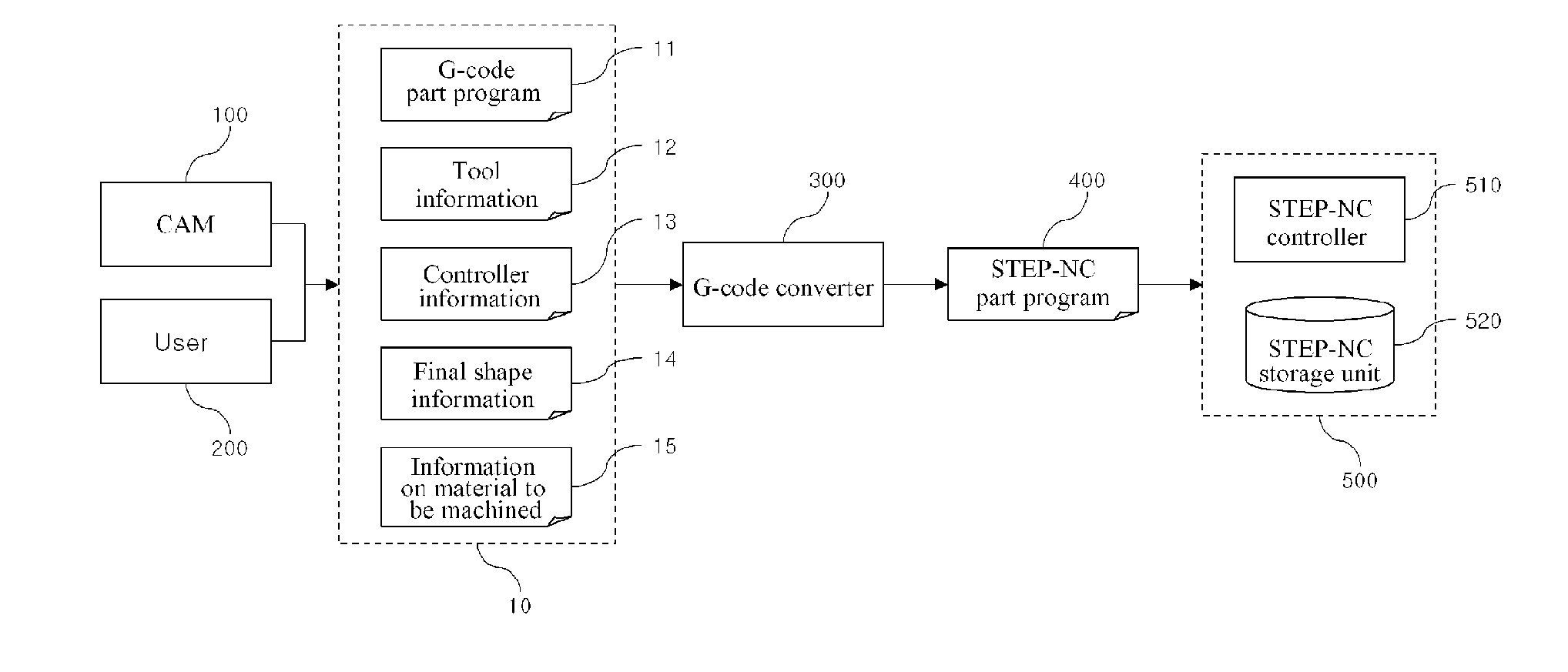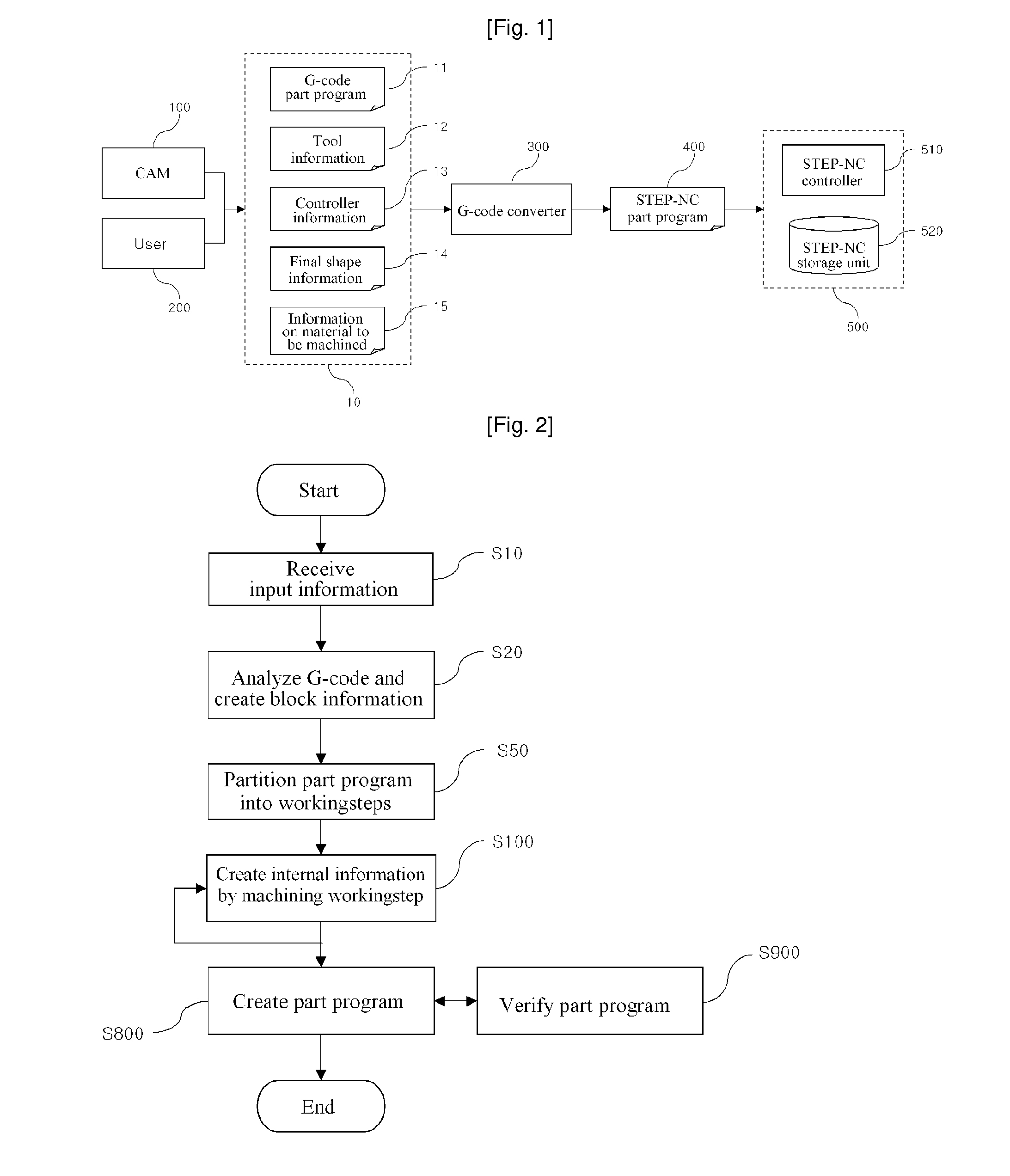Transformation Method Of G-Code Into Step-Nc Part Program
a technology of transforming a gcode and a part program, which is applied in the direction of programme control, total factory control, instruments, etc., can solve the problems of inability to feed back to cad/cam the machining conditions optimized through actual machining, and difficulty in high-quality machining, so as to achieve the effect of expanding the use of the step-nc controller, reducing manpower and time consumed for introducing the step-nc controller
- Summary
- Abstract
- Description
- Claims
- Application Information
AI Technical Summary
Benefits of technology
Problems solved by technology
Method used
Image
Examples
Embodiment Construction
[0031]Hereinafter, preferred embodiments of the present invention will be described in detail with reference to the accompanying drawings.
[0032]FIG. 1 is a view showing the configuration of a machining system to which a method of transforming a G-code into a STEP-NC part program according to the present invention is applied.
[0033]A G-code converter 300 is an apparatus for converting a G-code by using a method of transforming a G-code into a STEP-NC part program according to the present invention. As shown in FIG. 1, the G-code converter receives a variety of information 10 including a G-code part program from a CAM or a user, processes the received information 10, and outputs a STEP-NC language type part program 400.
[0034]The information 10 inputted into the G-code converter 300 includes a G-code part program 11, tool information 12, numerical controller information 13, final shape information 14, and machined material information 15. Here, the G-code part program 11, the tool infor...
PUM
 Login to View More
Login to View More Abstract
Description
Claims
Application Information
 Login to View More
Login to View More - R&D
- Intellectual Property
- Life Sciences
- Materials
- Tech Scout
- Unparalleled Data Quality
- Higher Quality Content
- 60% Fewer Hallucinations
Browse by: Latest US Patents, China's latest patents, Technical Efficacy Thesaurus, Application Domain, Technology Topic, Popular Technical Reports.
© 2025 PatSnap. All rights reserved.Legal|Privacy policy|Modern Slavery Act Transparency Statement|Sitemap|About US| Contact US: help@patsnap.com



